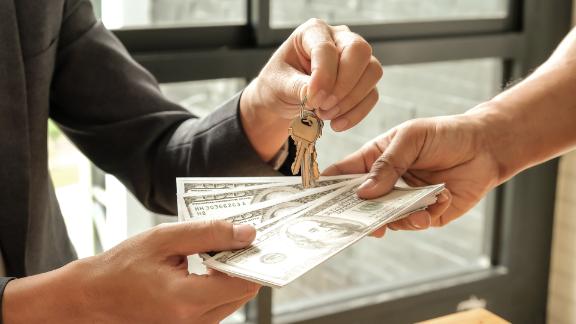
Having a smaller monthly mortgage payment is helpful in all sorts of ways. Not only does a smaller payment mean having to spend less money each month on your home, but a large mortgage payment can make it more difficult to cover your everyday expenses or to save money for retirement, family vacations or a rainy day.
Many lenders also want borrowers to have a debt-to-income ratio below 43%. This means that, generally speaking, all your monthly debt payments need to make up no more than 43% of your gross monthly income. A smaller mortgage payment makes it easier to reach this benchmark.
So, if you want to secure a lower mortgage payment on a home you’re looking to buy, or if you want a lower monthly payment on a home you already own, how can you do it? Fortunately, there are quite a few ways to accomplish this goal. Here are five of the easiest ways to lower your mortgage payment, some of which can lead to considerable savings over the long term.
1. Extend the length of your mortgage
If you already own a home with a monthly mortgage payment you’d like to lower, one strategy is to extend the length of your mortgage term. This is generally done by refinancing your home to pay off the existing mortgage with a brand-new one.
When you refinance, there are two ways to lengthen your mortgage. One is to simply start your mortgage again from the beginning, but another option is to change your loan repayment terms altogether.
Let’s say you’re currently seven years into a 30-year mortgage. If you refinance whatever principal is left on your current mortgage into a new 30-year mortgage, your monthly payments will drop because you’re now spreading out the payments across a new 30-year period and at the same time starting with a lower principal since you’ve already paid off a portion of the original mortgage.
Or, if you currently have a 15-year mortgage, you could refinance into a new 20-year or 30-year home loan, thus lengthening your loan term and spreading your payments out over a longer timeline.
Related: Why you should get a 15-year mortgage — and why you shouldn’t.
How much can you lower your payment by extending your home loan? While the specifics will vary depending on your circumstances, a borrower who just started a 15-year mortgage for $250,000 with a fixed APR of 4% would fork over $1,849 per month in principal and interest. If that person switched to a 30-year home loan with the same APR, their payment would drop to $1,194 per month.
Click here to compare offers from refinance lenders at LendingTree, an online loan marketplace.
2. Refinance to get a lower interest rate
Even if you don’t want to dramatically change your repayment timeline, you can still lower your payment by refinancing if you can lock in a lower interest rate than you have on your current mortgage. The impact of a lower interest rate can be dramatic when it comes to your monthly payment, although the specifics vary based on your situation.
Consider this example: A 30-year home loan for $300,000 with an APR of 4% would require a monthly principal and interest payment of $1,432. If you can repay the same loan amount over the same term but at a 3% APR, the monthly payment drops to $1,265 per month.
Related: 3 reasons it’s not too late to refinance your mortgage.

iStock A lower interest rate can reduce your monthly mortgage payment when you refinance.
While interest rates are no longer at the record lows we saw in 2020, you can still get rates in the low 3% range on a 30-year mortgage. Depending on your current interest rate, that could still make a big difference in your monthly payment, though it’s important to keep the costs of refinancing in mind to make sure you’re actually saving money in the long run.
For people who have already paid 10 or more years on a 30-year mortgage, there’s another way to lower your interest rate — switch to a shorter loan. Interest rates are typically lower on shorter home loans, so if you’re currently 10 years into a 30-year mortgage, you could potentially refinance into a 20-year home loan to secure a lower interest rate and payment and still pay off your house in a total of 30 years.
Check your rates now at LendingTree and see offers from multiple lenders.
3. Make a larger down payment
Another way to secure a lower mortgage payment when you’re first buying a home is to make a larger down payment. This move means you’ll be borrowing less overall, which inevitably leads to a lower monthly payment.
How much lower? Let’s say you want to purchase a new home for $400,000, but you’ve only saved up a $20,000 down payment so far. The monthly principal and interest payment on a new 30-year mortgage for $380,000 would work out to $1,814 per month at 4% APR. On top of that, you’d also have to pay for private mortgage insurance, or PMI, until you have at least 20% equity in your property. According to LendingTree, PMI typically ranges from 0.15% to 1.95% but can reach 2.5% or more.
But, if you were able to save up 20% of your loan amount, or $80,000, the monthly principal and interest payment on a new 30-year mortgage for $320,000 would work out to $1,528 per month at a 4%APR. And with a down payment of 20%, you’d also avoid the cost of PMI altogether.
Related: Does it still make sense to put down 20% when buying a home?
4. Drop PMI from your home loan
While PMI can be dropped from your home loan automatically once you have at least 22% in equity, you may have a chance to stop paying PMI ahead of that if you’re willing to pay for an appraisal in order to prove you now have at least 20% in equity in your property. The advantage of going down this route is that you don’t have to go through the hassle of refinancing in order to lower your monthly payment.
However, if you know you have 20% equity in your home, you might prefer to refinance with a new lender altogether, perhaps to stack several of the above techniques into a new mortgage. In this case, having 20% equity in your property (or more) could leave you with a new home loan with no PMI and potentially even better rates and terms.
See if you qualify for a refinance that can lower your monthly mortgage payment.
5. Rent out extra space
Finally, don’t forget that you could have someone else effectively subsidize part of your monthly mortgage payment if you’re willing to rent out extra space. This could mean converting your home’s basement into a separate apartment, but it could also involve getting a roommate or occasionally renting out a room.

iStock Consider renting out a section of your home or getting a roommate to help cover your monthly mortgage payment.
This option is certainly not for everyone, and you’ll want to keep in mind the rules of your current mortgage about renting out your property as well as any local ordinances about residential rentals. But renting out part of your home is worth considering if you want to pay less for housing and other options on this list won’t work.
Related: Know the pros and cons before you take cash out of your home with a refinance.
It can be worth the trouble to lower your monthly mortgage payment
Lowering your mortgage payment may not be easy, but the hassle can be worth it when you add up the years of potential savings, along with having more discretionary cash each month. Just remember that refinancing your mortgage typically requires a good or excellent credit score, and that closing costs can put a dent in how much you’ll save over the long term.
If you’re curious as to whether you can qualify for a lower mortgage payment, your best bet is reaching out to a lender or getting a free mortgage quote at an online loan marketplace to find out your best options. A lower interest rate, a lower monthly payment or both could be yours if you’re willing to take a few simple steps to start the process.
Comments are closed